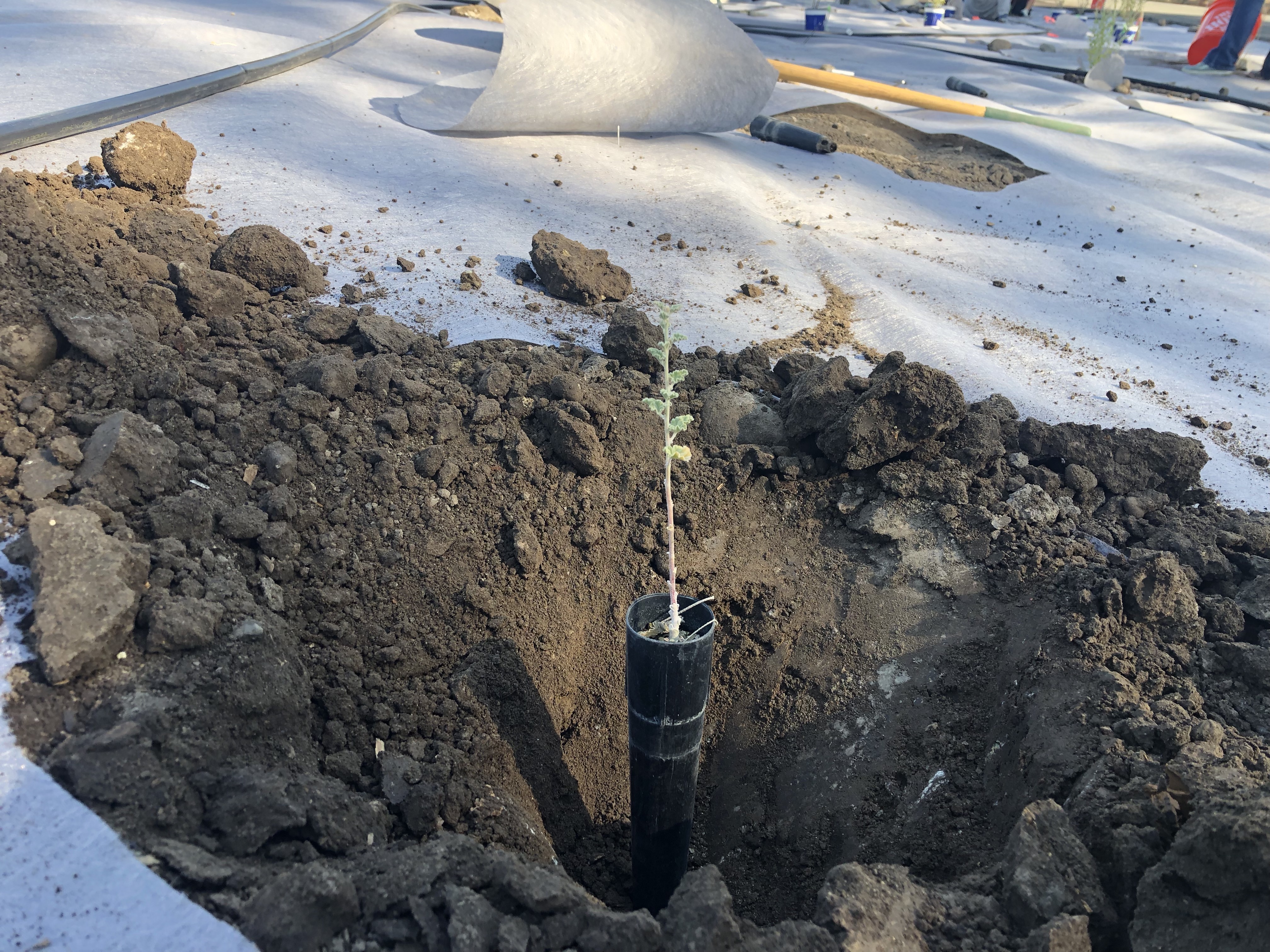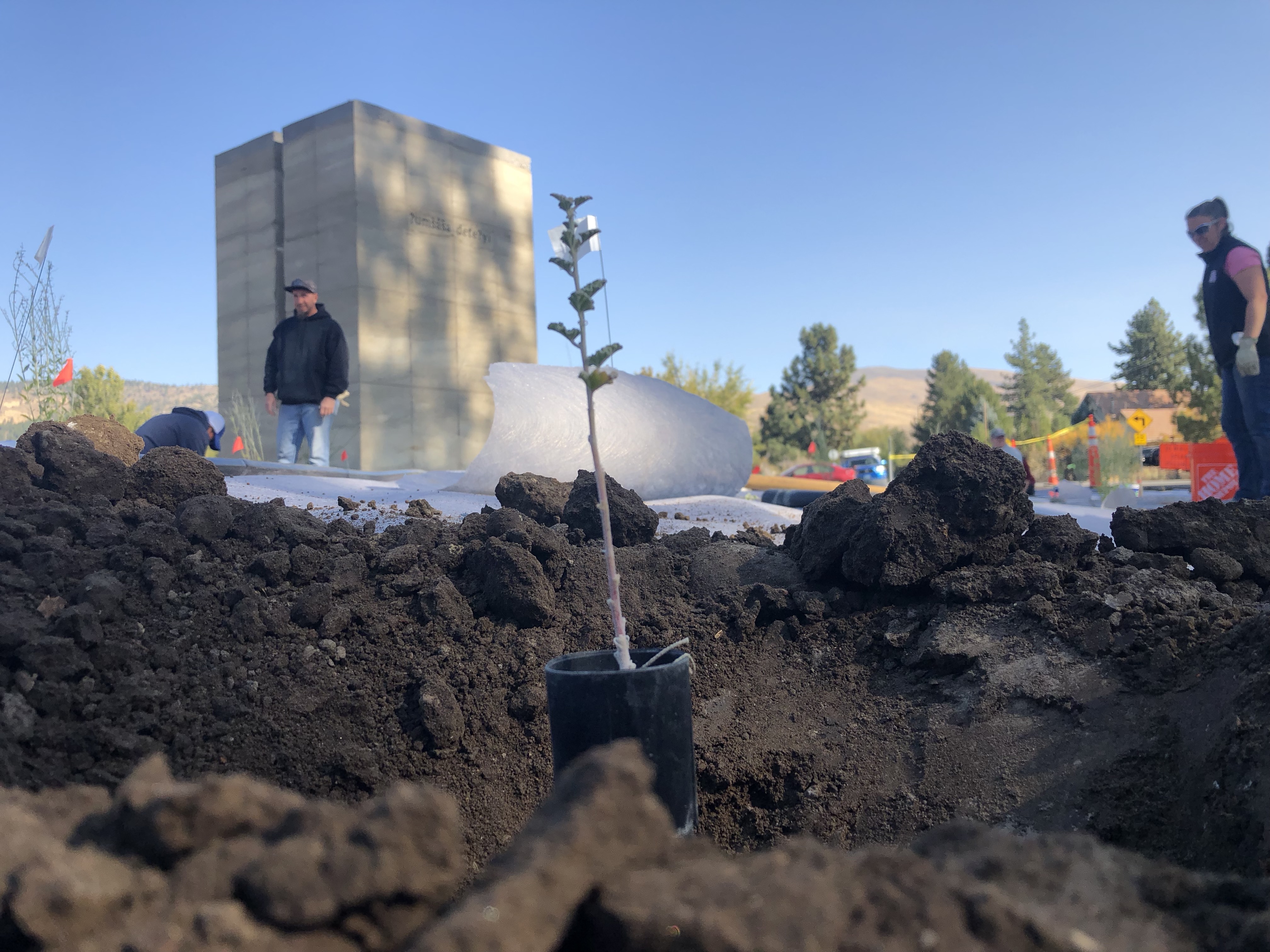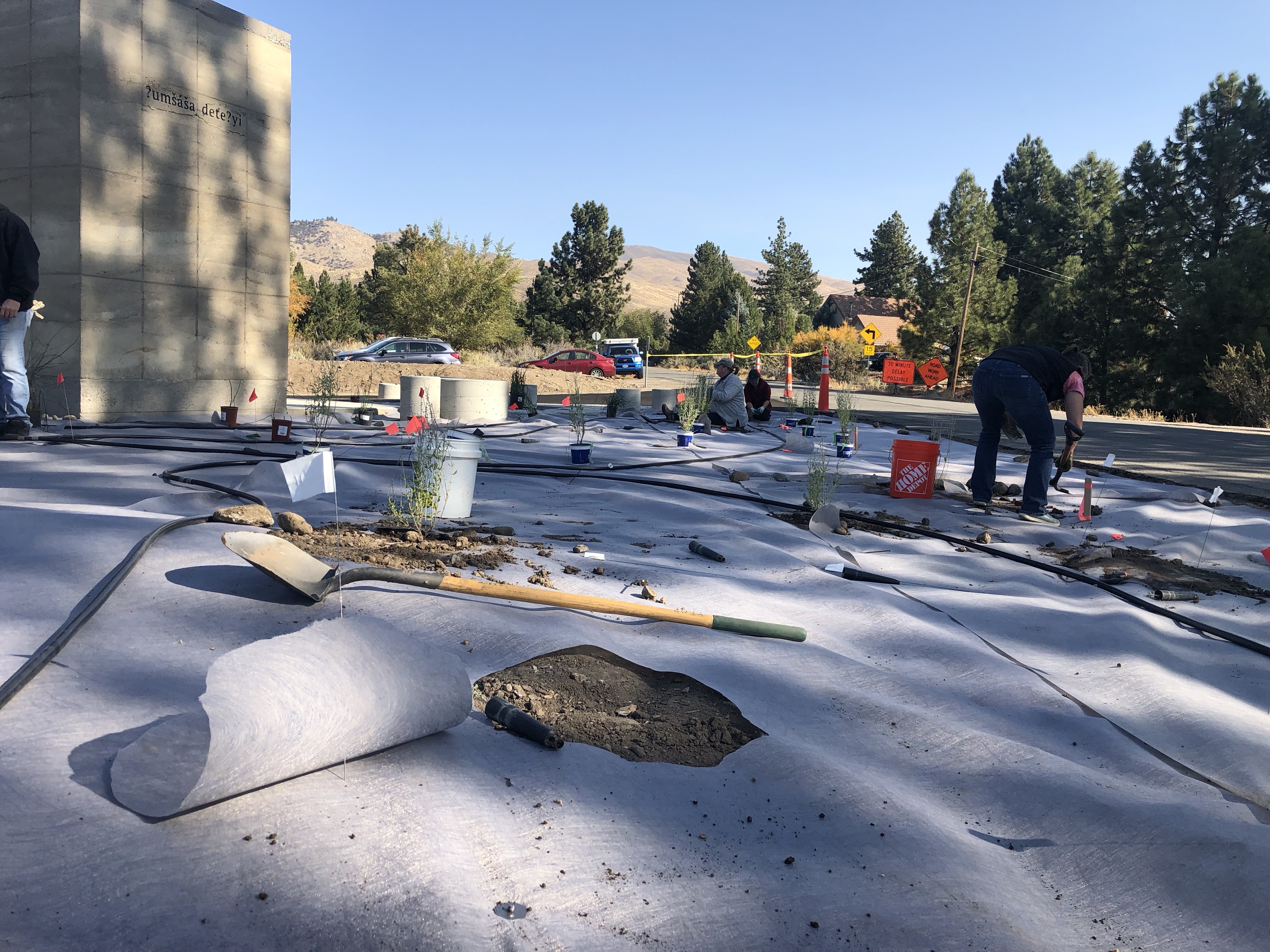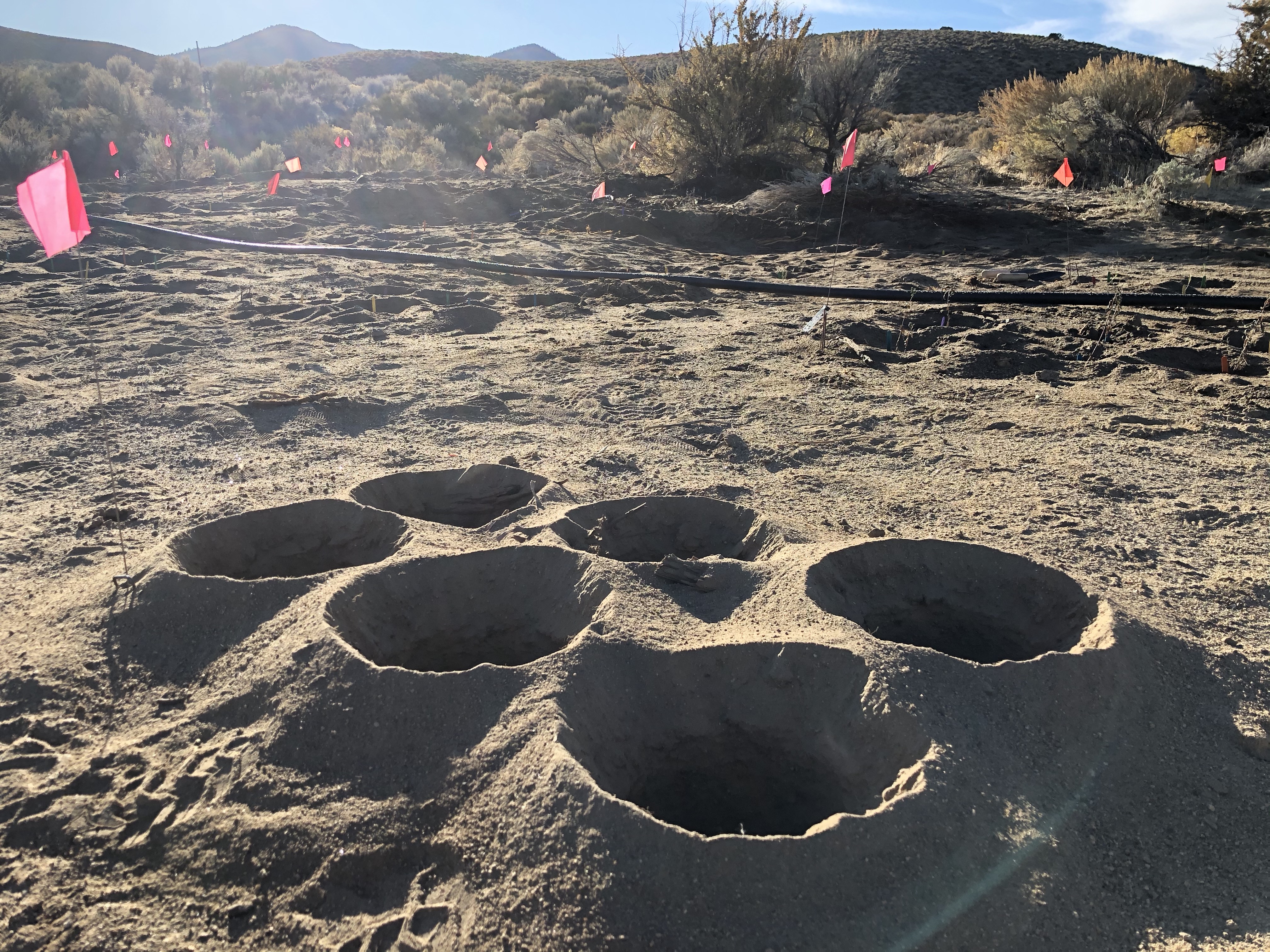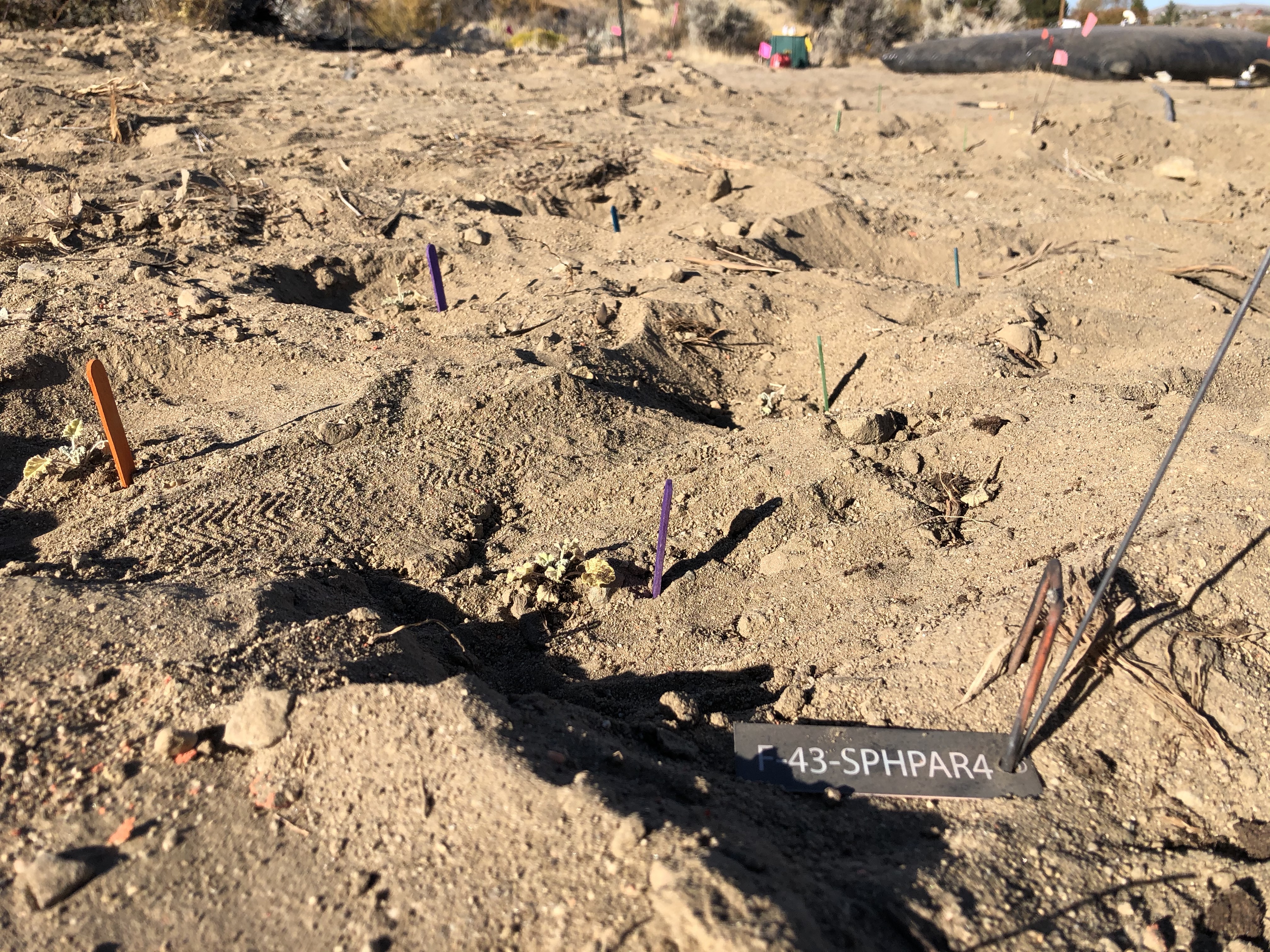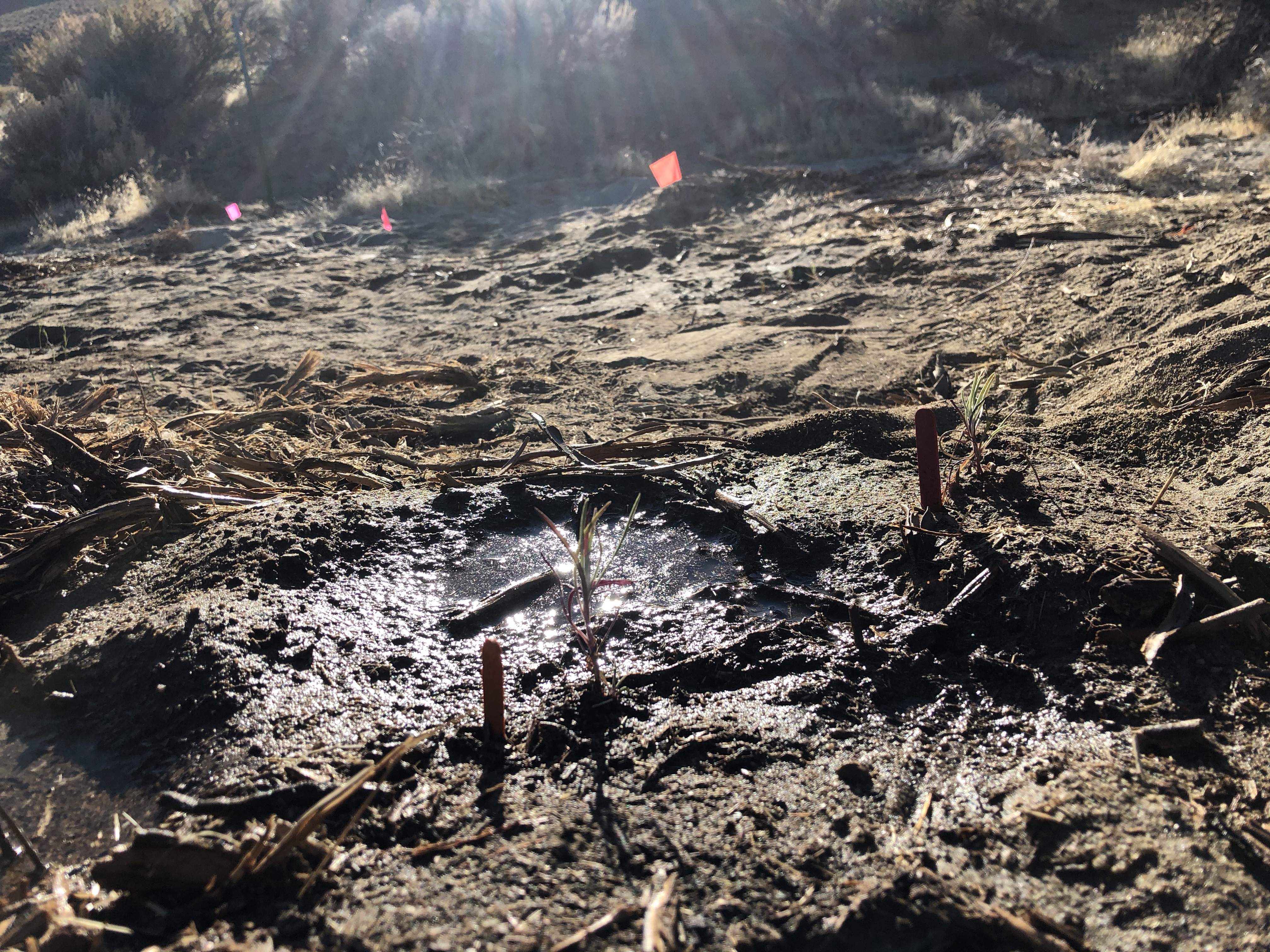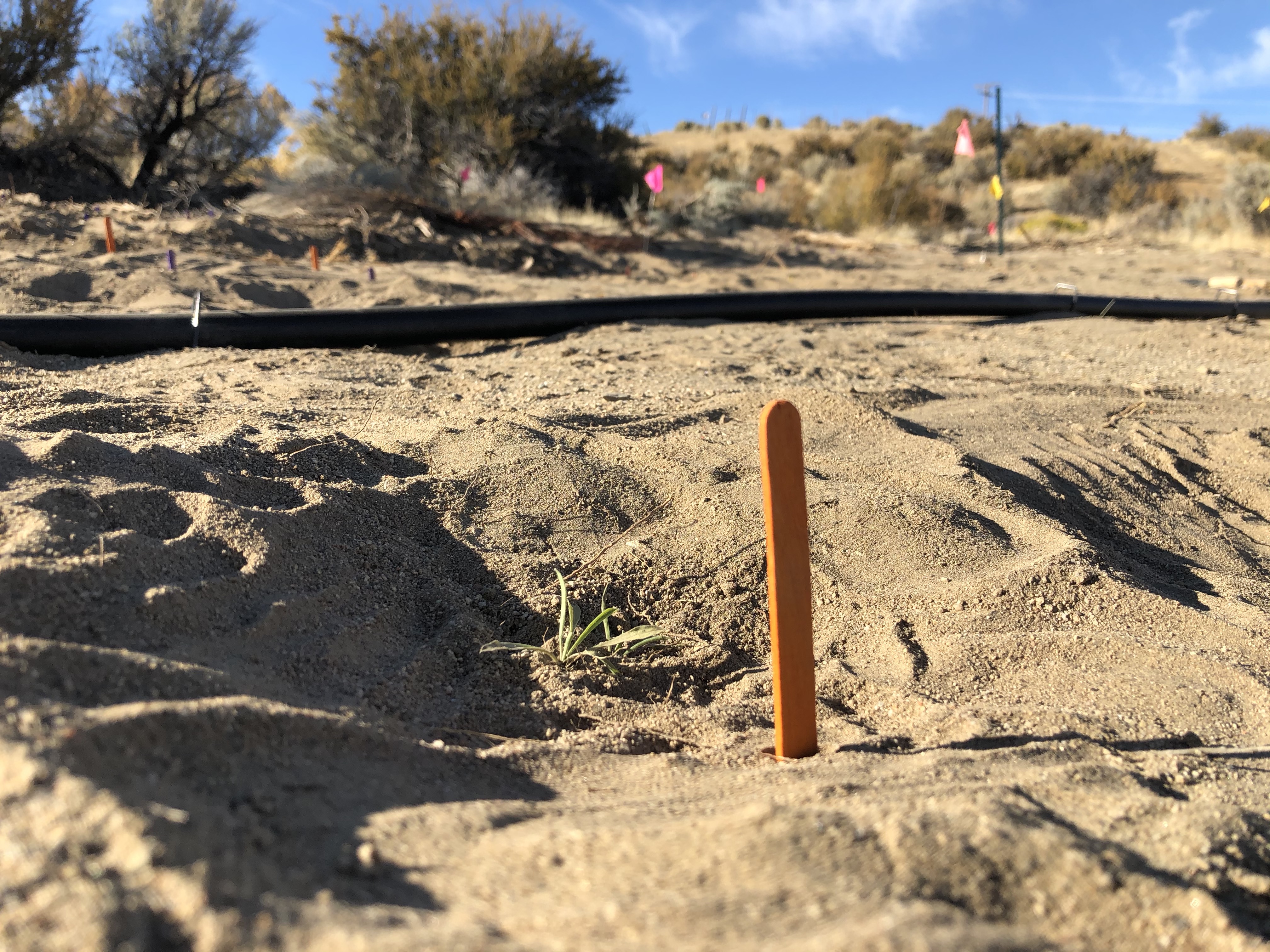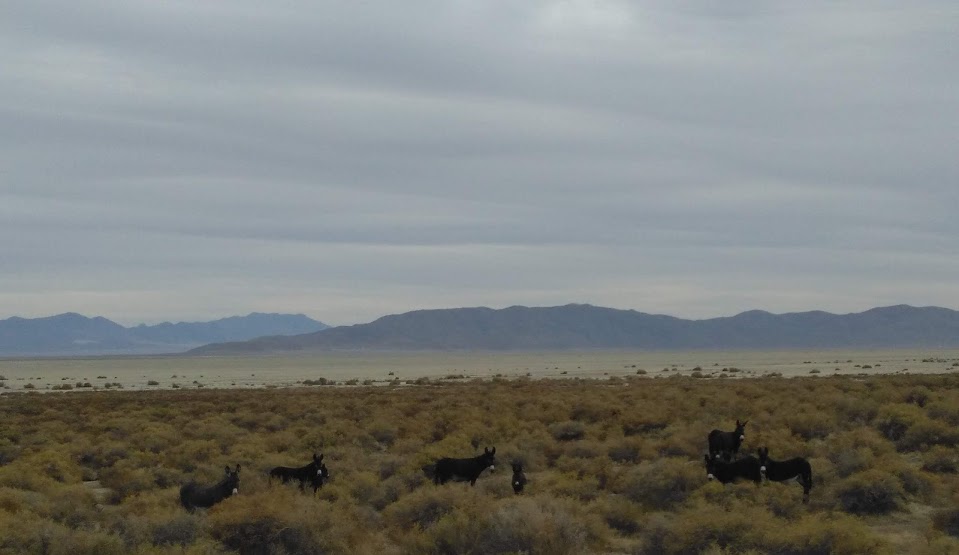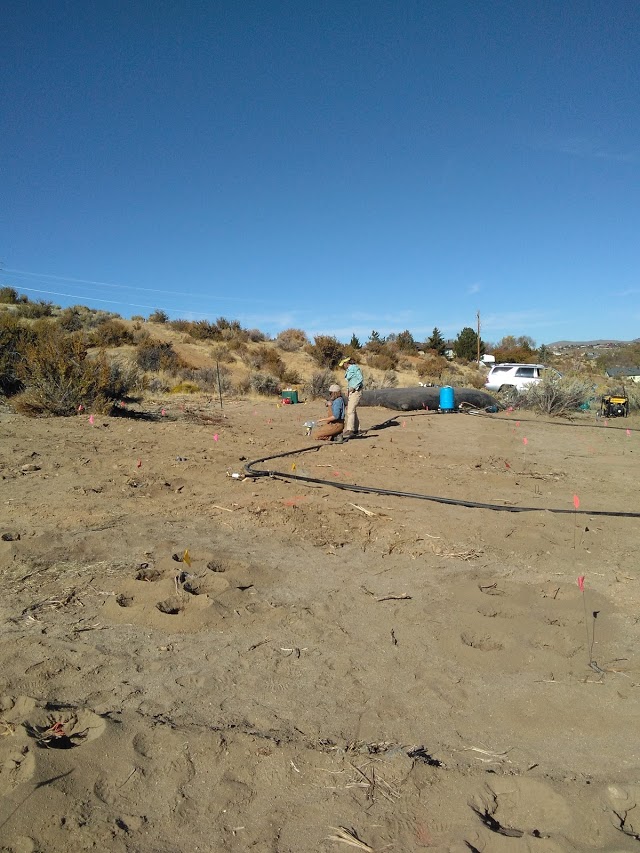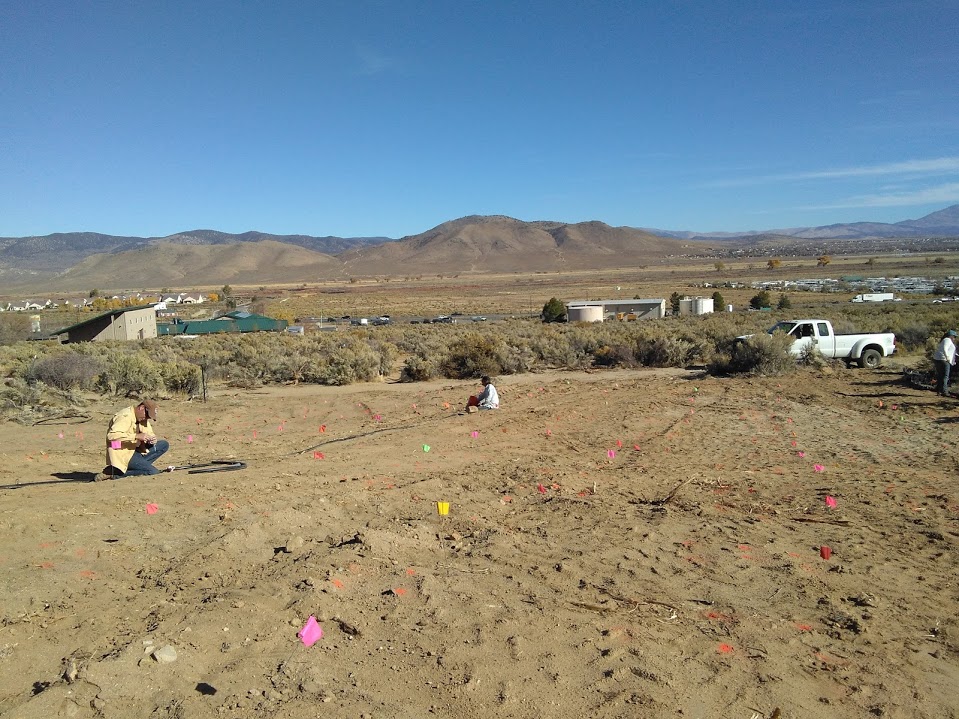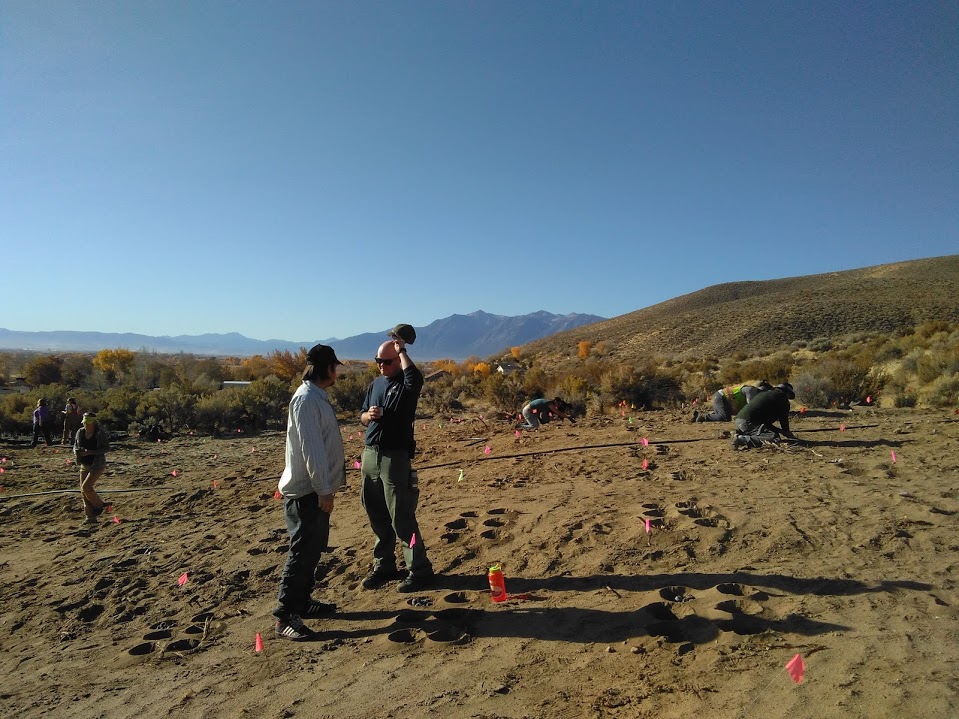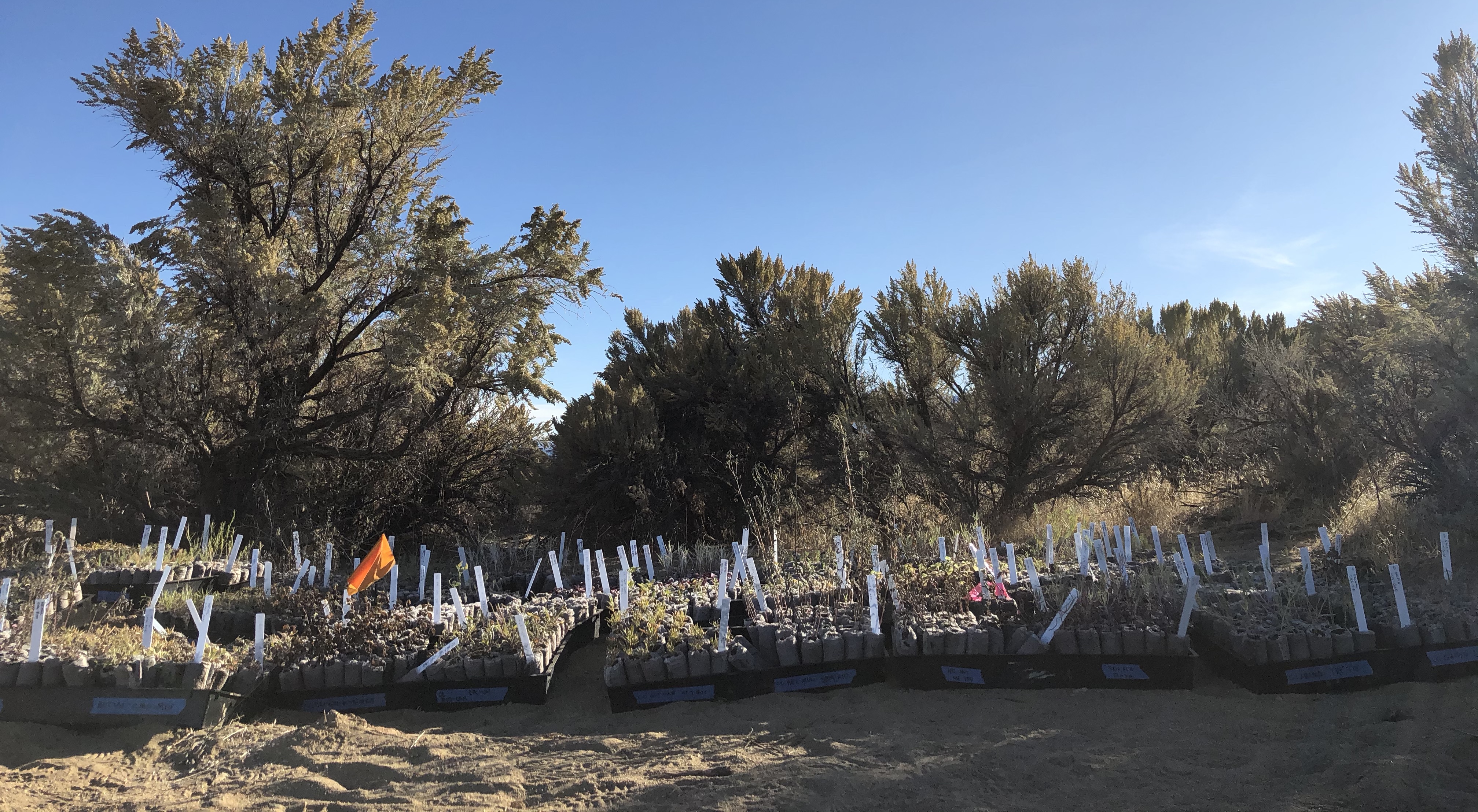
My internship has provided me with meaningful learning opportunities that have given me a sense of direction in my intended career path. During the field season, I have collected seeds to be used for restoration + research practices that work to provide regionally appropriate native plant material to the Great Basin. As the threat of wildfires in the Great Basin grows, conservationists/restorationists are faced with the increasing need for native plant material and seeds. This month, my internship has allowed me to experience first-hand the positive implications of my seed collections from the summer field season. The native wildflower seeds I collected will then be sent to a seed extractory for cleaning and processing before they are used for research or restoration purposes. This month, I was lucky enough to be apart of both!
First, we helped Washoe County Parks and REI plant native seedlings at Crystal Peak Park in Verdi, California. The soils in the area were surprisingly rocky, which made digging the holes for the plugs extremely challenging! The soil auger even failed to properly create holes in the rocky soils! Luckily, there were plenty of volunteers and shovels and together, we were able to finish planting all the native plugs. We planted shrubs, grasses, and forbs! Including sagebrush (Artemisia sp.), horsetail (Equisetum sp.), globemallow (Sphaeralcea sp.), and many more. The goals of this replanting event were to beautify the park surrounding a recent art installation, attract/support pollinators, and promote the use of native plant material. This experience allowed me to realize the positive implications of my seed collections and how great the need for native plant material is. It also highlighted the necessity of native plant material in more urban/developed settings to support native pollinators and prevent the spread of invasive species!
Next, we assisted researchers from Northern Arizona University (NAU) in setting up a field study using native plant plugs grown from seeds collected within the Seeds of Success program! The NAU researchers plan to investigate plant-pollinator interactions and spatial differences that affect the plants’ ability to grow successfully in this location (Carson City, NV). They are using native forbs collected from various elevations in southern regions of the Great Basin to investigate which wildflowers will successfully grow north of their ranges. This will help inform conservationists/restorationists of the feasibility of assisted migration, a relatively new concept born from the concern that species may not be able to move/and or adapt fast enough in response to changes in climate and should be manually relocated in order to conserve genetic diversity/prevent the extinction of the species. This concept is growing in importance as sub-populations of critical plant species cease to exist as a result of wildfires and other forms of disturbance (usually perpetrated by climate change). This lessens the genetic diversity of the species as a whole, affecting its ability to adapt to disturbance and changes in climate. The issues we face as a result of climate change and other anthropogenic disturbances force conservationists/restorationists to critically evaluate the best ways to mitigate the loss of genetic diversity so we can assure the persistence of critical plant species.
Setting up the study required using a soil auger to drill holes for the plants at each experimental plot. There were over 500 experimental plots and each contained six holes for the plants! Half of which were set up in a cleared area while the other half was placed within the sagebrush. The researchers are interested in investigating the variables within sagebrush habitat that may affect the plants’ ability to grow (e.g., distance from sage, percentage cover of cheatgrass). Nearly 3,000 holes were made and nearly 3,000 native seedlings were planted! Luckily, we had the help of several volunteers to set up the study.
Overall, it was an impactful learning experience for me to see how collected seeds are used for research intended to help conservationists/restorationists mitigate the impacts of climate change/biodiversity loss. Having the opportunity to experience the direct applications of my work has driven home the value of native seed collection. Above all else, these experiences have inspired me to continue learning more about native plant-based restoration methods and pursue career opportunities allowing me to invest deeper into this passion.

